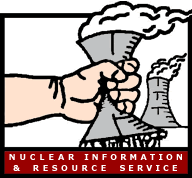 David (tiny five-person activist group NIRS with no lawyer)
defeated Goliath (the world’s biggest nuclear reactor manufacturer, Areva, and operator, EDF).
Previously
a committee terminated the licensing process
but the proposed operator wanted NRC review for the Calvert Cliffs 3
nuclear reactor.
For the first time ever, the Nuclear Regulatory Commission denied
a nuclear license, closing the book on Calvert Cliffs 3 for good,
and probably taking down
with it half a dozen or more other proposed reactors.
David (tiny five-person activist group NIRS with no lawyer)
defeated Goliath (the world’s biggest nuclear reactor manufacturer, Areva, and operator, EDF).
Previously
a committee terminated the licensing process
but the proposed operator wanted NRC review for the Calvert Cliffs 3
nuclear reactor.
For the first time ever, the Nuclear Regulatory Commission denied
a nuclear license, closing the book on Calvert Cliffs 3 for good,
and probably taking down
with it half a dozen or more other proposed reactors.
ENENEWS posted a roundup 12 March 2013, NIRS: Victory! License denied for U.S. nuclear reactor — First time in history NRC has upheld denial
Who is this proposed nuclear operator? The NIRS press release explains:
UniStar Nuclear is wholly owned by Electricite de France, which itself is 85% owned by the government of France. Calvert Cliffs-3 was to be an EPR reactor manufactured by the French firm Areva, also 85% owned by the French government.
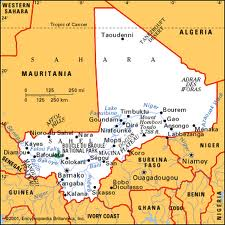 Areva, the French nuclear manufacturer for whom
France just fought a war in Africa.
I don’t think the U.S. needs to go down
the Uranium Highway in the Uranium Province in Niger,
so I call this license denial a good thing.
Areva, the French nuclear manufacturer for whom
France just fought a war in Africa.
I don’t think the U.S. needs to go down
the Uranium Highway in the Uranium Province in Niger,
so I call this license denial a good thing.
Even better: when I asked Michael Mariotte of NIRS about this licensing process a few months ago, he noted that NIRS had not even used a lawyer in its intervention in this case. He spelled that out in a briefing statement:
This truly has been a David vs Goliath case. NIRS, with five staff people, took on one of the largest nuclear utilities in the U.S. (Constellation) and the largest nuclear utility in the world (EDF) and the largest nuclear reactor manufacturer in the world (AREVA)—(Areva was not an official party in the case). NIRS did not have a lawyer representing us—this was done pro se, while UniStar was represented by mega nuclear law firm Winston and Strawn. We hope this case and these pending decisions will prove to be an inspiration to grassroots activists and people everywhere: the nuclear industry can be defeated. And the corollary is true too: we can achieve a clean energy future.
Sometimes justice does not require megabucks.
Some projections from Michael Mariotte:
It will also be a blow to the nuclear industry generally, which is seeing viable new reactor orders fade away into the horizon. The first applicant affected will be Nine Mile Point 3, also owned by UniStar. That project has been on hold pending the outcome of the Calvert Cliffs-3 proceeding. It will not proceed.
So this is really a defeat for two nukes at the same time. But wait, there’s more:
The two other Areva projects, Callaway and Bell Bend, are also not going to happen. And a key avenue of financing contemplated by many in the nuclear industry—loans from foreign export-import banks like Japan Bank for International Cooperation and the French Coface—are extremely unlikely to materialize.
So it’s four or five or six nukes down at the same time. Plus:
Also greatly affected will be the South Texas Nuclear Project,
That’s not South Texas 2,
the nuke that caught on fire in January
and has been down ever since.
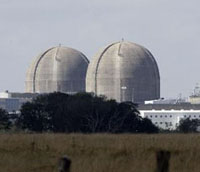 That’s the proposed
South Texas Project Units 3 and 4:
That’s the proposed
South Texas Project Units 3 and 4:
On February 24, 2011, 174 organizations worldwide sent a letter to the Prime Minister of Japan and key Cabinet officials warning that funding for the South Texas project from the Japan Bank for International Cooperation would be an extraordinary financial risk. Copy of the sign-on letter to Japanese Prime Minister and Cabinet, February 24, 2011.
In a further analogy between Japan and the U.S., Steven Mufson wrote for the Washington Post 11 March 2013, In U.S., nuclear energy loses momentum amid economic head winds, safety issues,
Two years after the tsunami that crippled Japan’s Fukushima power complex, the U.S. nuclear industry is facing fundamental and far-reaching challenges to its own future.
Only five years ago, industry executives and leading politicians were talking about an American nuclear renaissance, hoping to add 20 or more reactors to the 104-unit U.S. nuclear fleet.
But today those companies are holding back in the face of falling natural gas prices and sluggish and uncertain electricity demand. Only five new plants are under construction, while at least that many are slated for permanent closure or shut down indefinitely over safety issues.
On Monday, the Nuclear Regulatory Commission (NRC) reiterated its refusal to issue a license for a new unit at Calvert Cliffs, Md., that a French company had hoped to make the model for a fleet of reactors. A pair of reactors in Southern California are under scrutiny over whether a major contractor and a utility there concealed concerns about potential cracks in the tubes of a steam generator. And nuclear plants in Wisconsin and Florida are closing down because their owners said they cannot compete with less expensive natural-gas-fired electricity.
That’s right: at least as many reactors are closed (Kewaunee in Wisconsin), Crystal River 3 in Florida) or shut down (South Texas 2, San Onofre 2 and 3 in California, and others) as are being built, and with this Calvert Cliffs decision, fewer will be built (probably not the one in Levy County, Florida and more will be shut down and closed.
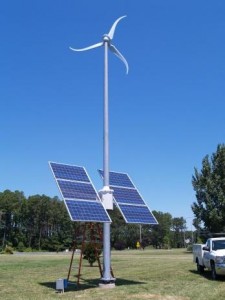 Plus: NIRS didn’t just oppose the licensing, it also filed
“Contention 10C, which challenges the adequacy of the wind and solar
power contribution estimates contained in the Final Environmental
Impact Statement (FEIS’s) alternative based on a combination of
energy sources (the combination alternative)”, resulting in a ruling
by the NRC’s ATOMIC SAFETY AND LICENSING BOARD Before Administrative
Judges
30 August 2012
saying in part:
Plus: NIRS didn’t just oppose the licensing, it also filed
“Contention 10C, which challenges the adequacy of the wind and solar
power contribution estimates contained in the Final Environmental
Impact Statement (FEIS’s) alternative based on a combination of
energy sources (the combination alternative)”, resulting in a ruling
by the NRC’s ATOMIC SAFETY AND LICENSING BOARD Before Administrative
Judges
30 August 2012
saying in part:
After considering all of the evidence and arguments presented, we find that, in the FEIS, the NRC Staff (Staff) unreasonably limited the wind and solar power contributions to the combination alternative by adopting an unrealistic completion date for the proposed action and excluding all wind and solar power sources not physically located in Maryland.
That board then weaseled and said the FEIS was technically adequate and declined to change it. Nonetheless, this is not just a defeat for a nuclear license, it is a win for wind and solar power, and for a smart and distributed grid.
 Georgia Power and Southern Company, are you paying attention? Nuke
is over. It’s time to end
the Vogtle 3 and 4 three-legged nuclear regulatory-capture boondoggle.
It’s time for
solar on schools and businesses and houses across Georgia
and
wind off the Georgia coast.
Arizona State University told us two years ago that
Georgia is the #3 state that could benefit most from solar power,
Georgia Power and Southern Company, are you paying attention? Nuke
is over. It’s time to end
the Vogtle 3 and 4 three-legged nuclear regulatory-capture boondoggle.
It’s time for
solar on schools and businesses and houses across Georgia
and
wind off the Georgia coast.
Arizona State University told us two years ago that
Georgia is the #3 state that could benefit most from solar power,
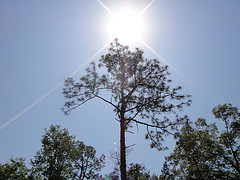 internally, for energy independence, and for profit by export to
other states.
Let’s get on with solar and wind power for jobs,
energy independence, and profit, plus
funding education, and plenty of clean air and water!
internally, for energy independence, and for profit by export to
other states.
Let’s get on with solar and wind power for jobs,
energy independence, and profit, plus
funding education, and plenty of clean air and water!
-jsq
Short Link:
Pingback: Activists Grill NRC on San Onofre Restart | On the LAKE front